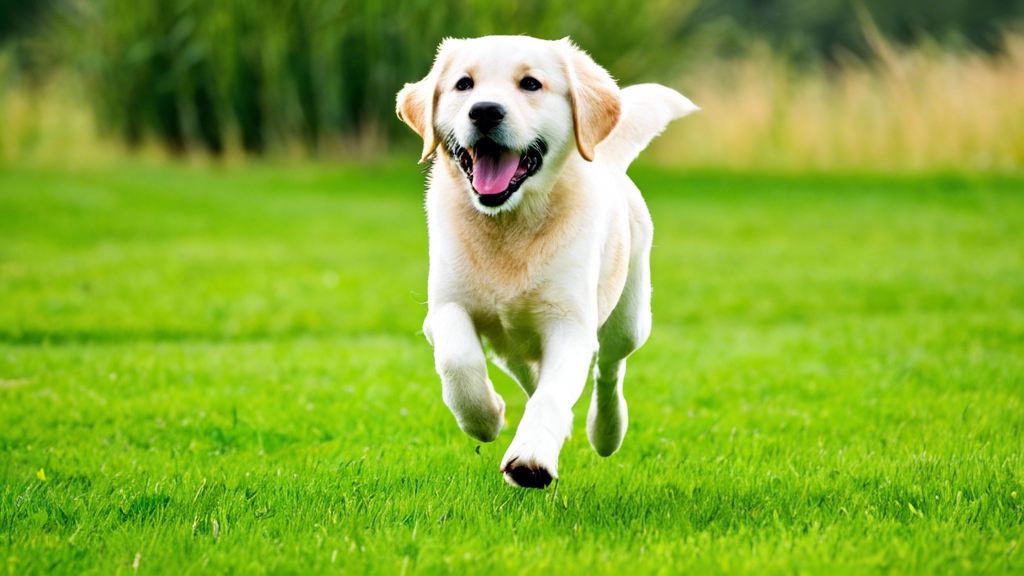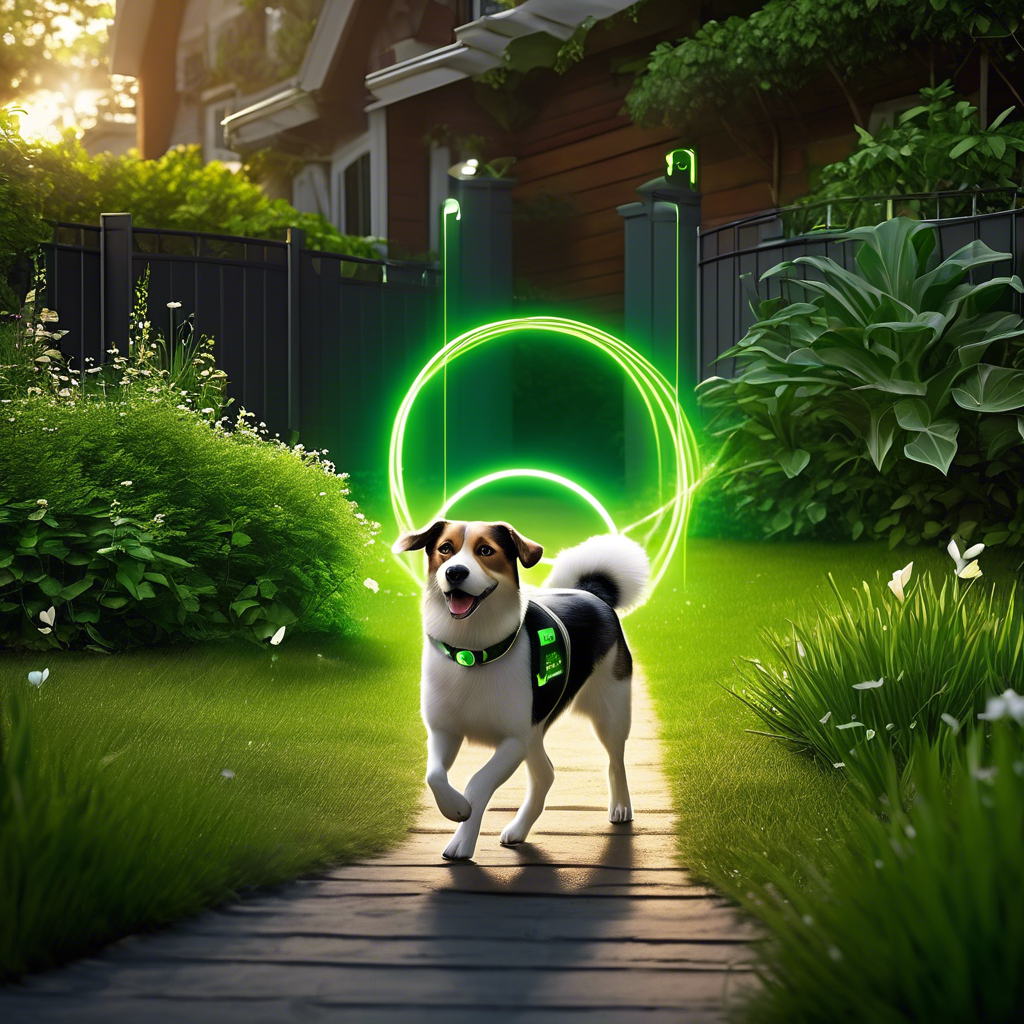Revolutionizing Pet Containment: How a GPS Dog Fence Works
Introduction to GPS Dog Fences
A GPS dog fence is a modern, wireless pet containment system using Global Positioning System (GPS) technology. It allows pet owners to set virtual boundaries for their dogs without physical barriers.
Key features of GPS dog fences include:
- Wireless Boundaries: No need for underground wires.
- Customizable Boundaries: Set flexible, adjustable zones.
- Portability: Easy to carry and use anywhere.
- Real-Time Tracking: Monitor the dog’s location anytime.
How it works:
- A GPS collar receives satellite signals.
- The system determines the dog's position.
- The collar warns the dog with a tone or static correction if it approaches the boundary.
The Evolution of Pet Containment Systems

Pet containment systems have significantly evolved over the years. Initially, traditional physical fences were the only option available. These fences included:
- Wooden Fences
- Metal Fences
- Chain-Link Fences
With the advancement of technology, electronic containment systems emerged in the market. These systems offered alternatives to physical barriers. Some key developments include:
- Invisible Fences: Utilized underground wires to create a boundary zone, prompting a collar response on breach.
- Wireless Fences: Removed the need for underground wires by establishing a radial range from a central transmitter.
- GPS Dog Fences: Advanced further, using satellite technology to define boundaries, easing setup, and allowing flexible containment areas.
Each innovation aimed to improve ease of use and security.
How GPS Technology Reinvents Pet Safety

GPS technology offers a modern solution for pet safety, providing real-time tracking and customized boundaries.
- Real-Time Location Tracking: Owners can monitor their pets' exact location at any time through a smartphone app.
- Customizable Boundaries: Users can set virtual fences of various shapes and sizes, tailored to their needs.
- Instant Alerts: If a pet breaches the designated area, the system immediately notifies the owner.
- Activity Monitoring: Track a pet's activity levels, ensuring they get enough exercise.
- Multiple Pet Support: Easily manage and monitor multiple pets through a singular system.
This technology ensures a higher level of safety and freedom for pets and peace of mind for owners.
Key Components of a GPS Dog Fence
A GPS dog fence consists of several essential components that contribute to its functionality:
- GPS Collar: Worn by the dog, this collar contains a GPS receiver that tracks the dog's location in real-time.
- Base Station: Serves as the central unit, connecting to GPS satellites and transmitting data to the owner's smart device.
- Smart Device: Usually a smartphone or tablet, it runs a dedicated app where owners can set virtual boundaries and monitor their dog’s movements.
- Virtual Fence: Created digitally within the app, it defines the safe area where the dog is allowed to roam.
- Alert System: Provides notifications when the dog nears or breaches the established boundaries.
Installation and Setup Process
Installing a GPS dog fence involves a few key steps:
- Purchase and Unbox: Acquire the GPS dog fence system and unbox the components, including the GPS collar and base station.
- Charge the Collar: Ensure the dog collar is fully charged before first use.
- Download the App: Install the companion app on a smartphone and create an account.
- Base Station Setup: Position and power up the base station in a central location.
- Boundary Configuration: Use the app to set the virtual boundaries by walking the perimeter or using a map interface.
- Collar Fit: Properly fit the GPS collar onto the dog, ensuring it's secure but not too tight.
- Testing: Verify the boundaries by having the dog approach the edges while monitoring the app for alerts.
Understanding the Working Mechanism
A GPS Dog Fence relies on modern technology to create a flexible containment area without physical barriers. The system includes a GPS collar worn by the dog and a base station controlled by the owner.
-
GPS Collar:
- Equipped with a GPS receiver.
- Communicates the dog's position to the base station.
- Includes warning signals such as vibrations or sounds.
-
Base Station:
- Acts as the control center.
- Sets the virtual boundary.
- Monitors the dog's location.
-
Setup Process:
- Define the containment zone via an app.
- Collar is programmed with boundary data.
- Begin monitoring and training phase.
By combining these elements, the GPS Dog Fence ensures pet safety through technology.
Pros and Cons of GPS Dog Fences
Pros
- Portability: Easy to set up and move; ideal for vacations or temporary locations.
- Customizable Boundaries: Design custom areas through a mobile app; adjust as needed.
- No Physical Barriers: No wires or physical fences required; unobtrusive and eco-friendly.
- Real-Time Tracking: Monitor pet’s location in real-time to ensure safety.
- Safety Alerts: Receive notifications if the dog breaches the boundary; enhanced security.
Cons
- Battery Dependency: Relies on battery power; requires regular charging.
- Signal Limitations: GPS signals can be obstructed by terrain or buildings; may affect accuracy.
- Cost: Higher initial setup cost compared to traditional fences.
- Training Requirement: Dogs must be trained to understand boundary cues.
- Technology Reliance: Dependent on technology; potential for technical issues or malfunctions.
Comparing GPS Dog Fences to Traditional Fencing
Traditional fencing involves physical barriers like wood, metal, or vinyl to contain pets. They are often costly to install and maintain. They can also obstruct views and may be susceptible to damage from weather or chewing. In contrast, GPS dog fences utilize satellite technology to create invisible boundaries, offering several benefits:
- Cost-Effective: GPS fences typically have lower initial and maintenance costs.
- Portability: Easily transport the system to new locations.
- Customization: Adjust boundaries without physical alterations.
- Aesthetics: Maintain open views with no physical barriers.
- Durability: No wear and tear from elements or pets.
Maintenance and Troubleshooting Tips
Proper maintenance ensures the GPS dog fence operates efficiently. Regularly check the collar battery and charge it as needed. Examine the collar for signs of wear and tear. Ensure the GPS unit and transmitter software are up-to-date by performing regular updates.
Troubleshooting Common Issues
- Low Battery: Recharge or replace the collar's battery.
- Signal Loss: Ensure the area has good GPS reception and avoid obstructions.
- Inconsistent Boundaries: Recalibrate the GPS coordinates and reset the boundary settings.
- Collar Fit: Ensure the collar fits snugly but comfortably.
- Interference: Keep devices away from magnetic or metal objects.
Real-world Applications and Success Stories
Applications
- Urban Settings: In bustling cities, where traditional fences aren't feasible, GPS dog fences ensure pets remain safe.
- Rural Areas: Large properties benefit from customizable GPS boundaries that traditional fences can't cover adequately.
- Traveling Pet Owners: Portable GPS systems allow for flexible containment when moving between locations.
- Rehabilitation Programs: Animal shelters and rescues use GPS systems to create temporary containment areas for socializing animals.
Success Stories
Sarah from Montana successfully trained her dog using a GPS fence, allowing it to roam a 5-acre farm safely. John from New York City reports stress-free walks and playtime in busy parks using a mobile GPS containment system.
Future Trends in Pet Containment Technology
Innovations in pet containment technology are poised to address various needs more effectively.
- Enhanced GPS Accuracy: Advancements in satellite technology promise more precise and reliable tracking.
- Mobile Integration: Seamless integration with smartphones and smart home devices ensures real-time monitoring and control.
- AI-powered Analytics: Predictive analytics can anticipate pets' behavior, helping to prevent escapes before they happen.
- Eco-friendly Solutions: Solar-powered collars and recycling programs for electronic components contribute to sustainability.
- Wearable Health Monitors: Future collars may include health tracking features, providing comprehensive data about pets' well-being.
These trends are shaping a safer and smarter environment for pets and their owners.
Final Thoughts and Considerations for Pet Owners
Pet owners should be vigilant when selecting a GPS dog fence system. Understanding the dog's habits and behaviors is crucial for optimizing the system's settings. Regular maintenance checks ensure system reliability and pet safety.
- Compatibility Check: Verify the GPS system's compatibility with the dog’s collar.
- Area Coverage: Ensure the chosen system covers the required area.
- Battery Life: Check battery life and recharge frequency.
- Training: Utilize the training phase to familiarize the dog.
- Weather Impact: Consider weather conditions that might affect GPS signals.
Investing time and resources in a proper setup guarantees a secure environment for the pet.

